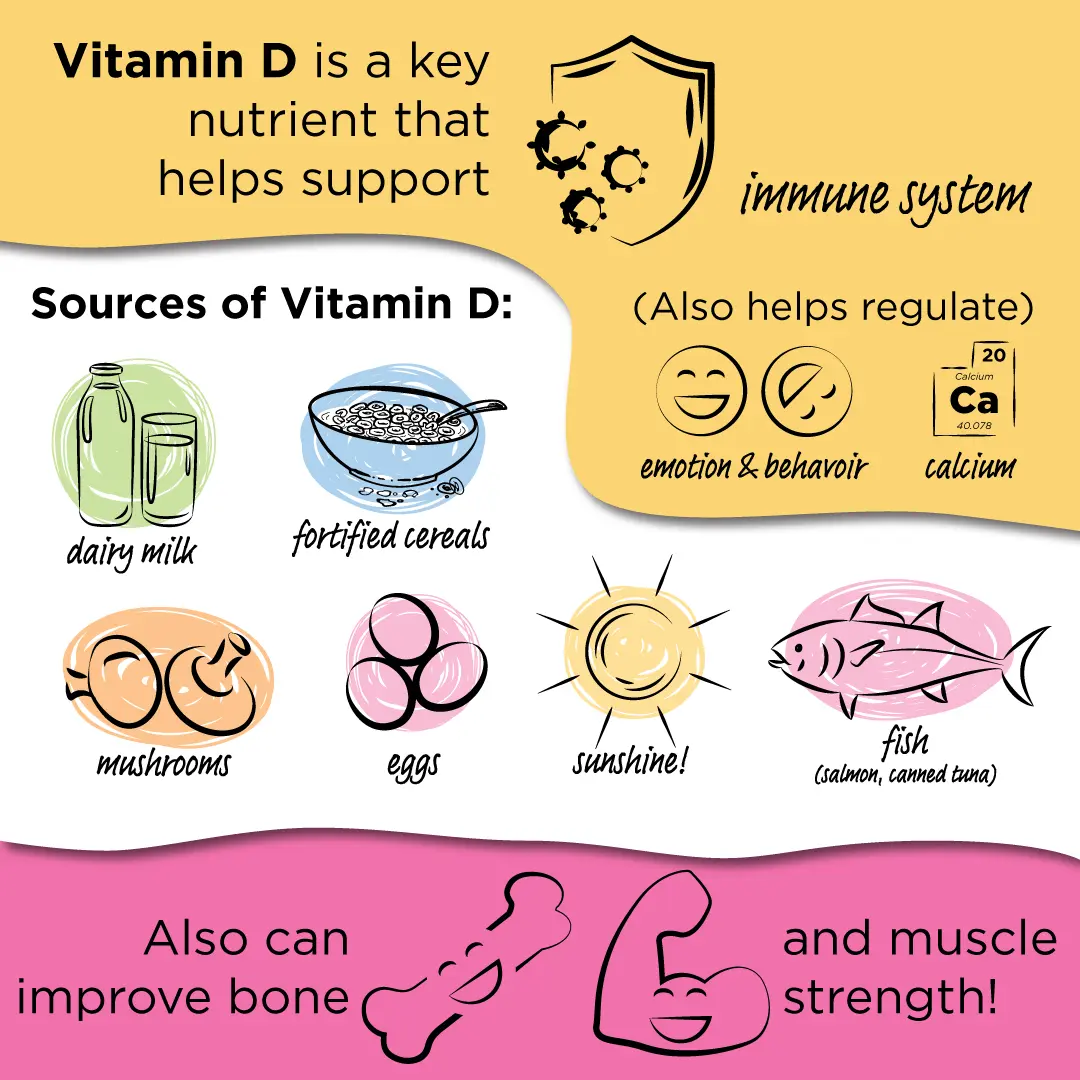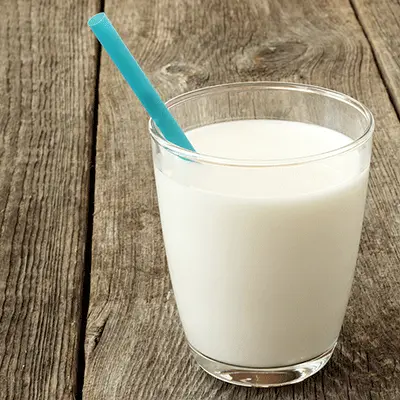Does Milk Naturally Have Vitamin D?
Milk naturally contains small amounts of vitamin D, but it's not typically found in significant enough amounts to meet daily requirements. Most milk is fortified with vitamin D to help ensure adequate intake. Fortification was introduced to help prevent rickets and support bone health, as vitamin D plays a crucial role in calcium absorption.
If you're drinking unfortified milk, it will still provide some vitamin D, but fortified milk is the more common source for meeting daily vitamin D needs.
How Much Vitamin D in Cow's Milk?
Vitamin D in milk must measure at least 100 International Units (IU) and up to a maximum of 150 IU vitamin D per eight-ounce serving per national milk standards.
Many categories of foods are permitted to include up to a specified amount of vitamin D. The Nutrition Facts label will tell you the amount of vitamin D in the food and the ingredient list on a food label will tell you the type of vitamin D that has been added to the food.
Is Milk a Good Source of Vitamin D?
Yes! Most milk sold in the United States is fortified with enough vitamin D to be considered a “good” source, which means it provides 10% to 19% of the recommended daily intake level for Vitamin D.
Where Does Vitamin D Come From?
Vitamin D comes from two primary sources: food and sunlight. The most commonly added form of vitamin D in milk is vitamin D3 (cholecalciferol), which is typically derived from lanolin, a substance from sheep's wool. Vitamin D3 can also be found in food sources like fatty fish (e.g., salmon, tuna, mackerel), fish liver oils and egg yolk. Vitamin D3 is also produced naturally by the skin when exposed to ultraviolet light from the sun.
The other type of vitamin D is D2, also known as ergocalciferol, which is a plant source of vitamin D that it is naturally found in mushrooms.
Vitamin D3 vs. Vitamin D2: What's The Difference?
The main difference between vitamin D3 (cholecalciferol) and vitamin D2 (ergocalciferol) lies in their sources and effectiveness. Vitamin D3 is typically derived from animal sources, while vitamin D2 comes from plants such as mushrooms. Over the years, there have been conflicting views in scientific literature as to whether D2 and D3 are equally effective at increasing and maintaining blood levels of vitamin D. The National Institutes of Health Office of Dietary Supplements states that no firm conclusions can be drawn about the different effects of vitamin D2 and D3.
The research in this area is still emerging. For example, a recent randomized, double-blind study among Asian and European women (20 to 64 years old) living in the United Kingdom found that eating biscuits or juice fortified with 600 IU vitamin D3 (the recommended amount for most adults) was more effective at raising blood levels of vitamin D as the same foods fortified with vitamin D2. According to the NIH, “it appears that at nutritional doses vitamins D2 and D3 are equivalent, but at high doses vitamin D2 is less potent.”
What Is Vitamin D Good For?
Vitamin D is important, along with calcium, for keeping bones healthy. In fact, it supports and enhances the absorption of calcium. Eating vitamin D-fortified foods, like milk, orange juice and breakfast cereals (check the Nutrition Facts label), as well as natural sources like fatty fish, can help people achieve the recommended amount of vitamin D needed for good health; it's a key nutrient that helps support the immune system and can improve muscle strength.
Fluid milk in the U.S. has been fortified with vitamin D since the 1930s and has been credited with making rickets a rare disease in children, which underscores why vitamin D fortification is still relevant today. Low consumption of vitamin D from foods and limited sunlight exposure has prompted the 2015 Dietary Guidelines for Americans to identify vitamin D as a nutrient of public health concern, along with calcium, potassium and fiber.
Many Americans may have insufficient levels of vitamin D, and vitamin D fortified milk can help meet these vitamin needs. For more information about vitamin D, check out these fact sheets for health professionals and the public.
















